Alfaraby
Oud Junkie
    
Posts: 796
Registered: 9-18-2009
Location: Holy Land
Member Is Offline
Mood: Cool
|
|
Gunpowder Scorched Guitar
What do you think about that ? Any oud relevance ?
http://www.youtube.com/watch?v=5Jfi0sOawT0#t=212
Yours indeed
Alfaraby
alfarabymusic@gmail.com
|
|
|
Doc139
Oud Junkie
    
Posts: 175
Registered: 2-23-2013
Location: Winterthur Switzerland
Member Is Offline
Mood: oud-sick
|
|
Jamil, you could try this trick on one of your old Nahat's, no? hahaha
Alexander
|
|
|
Microber
Oud Junkie
    
Posts: 853
Registered: 1-20-2006
Location: Belgium - Liège
Member Is Offline
Mood: No Mood
|
|
I remember an old post that I made in 2011
http://www.mikeouds.com/messageboard/viewthread.php?tid=12303#pid83...

Robert
|
|
|
jdowning
Oud Junkie
    
Posts: 3485
Registered: 8-2-2006
Location: Ontario, Canada
Member Is Offline
Mood: No Mood
|
|
So what is the objective in carbonising the outer surface of a guitar soundboard using gunpowder? Luthier Michi Matsuda and his interviewer on the
video do not say and only discuss the cosmetic appearance of the instrument. In the absence of any mention or evidence of acoustic 'improvement' the
suspicion might be that there is none ? So perhaps in the competitive world of making and selling acoustic guitars this instrument is only destined to
be a decorative display piece - an advertisement to bring attention to to Matsuda's other finely crafted luthier work that appears to be primarily
steel strung acoustic guitars costing $15,000 or more apiece?
However, for those who would like to try carbonising the outer surface of an oud soundboard I ran a test yesterday on a piece of Sitka spruce
soundboard material out of curiosity. The attached images show the result.
Gunpowder (or 'blackpowder' as it is usually referred to) was replaced by modern 'smokless' explosives for guns during the early 20th C but is still
manufactured for those who use antique weapons such as flintlock or percussion lock muskets etc for military re-enactments or 'primitive' hunting.
Blackpowder is considered to be a low grade explosive and for sporting applications is available in four grades Fg, FFg, FFFg and FFFFg - the more F's
the finer the grain size of the powder - the finer the grain size, the faster the powder burns when ignited. It is important to select the correct
grade of powder - a gun firing a heavy projectile requires a slower burning powder than one firing a lighter projectile. So, for example using FFFF
grade powder in an antique 12 bore shotgun is asking for trouble with likely destruction of the gun barrel.
Blackpowder, when ignited rapidly burns (with a 'whoosh' sound) to produce a cloud of gas (white smoke) - as seen in the video. As long as the powder
is not closely confined it will not result in an explosion. I did not have to hand a fireproof blanket (as seen in the video) so instead used a thin
stainless steel plate to cover the test piece. The plate was curved so that it was not in close contact with the test piece.
It is important to undertake any trials outside (notice the fire alarm sounding in the video!) for obvious reasons. I sprinkled a small quantity of FF
grade powder over the surface of the test piece, covered it with the plate and used a strip of newspaper as a fuse - giving me time to step well back
before the powder ignited.
The result was indeed a burnt piece of wood - see the attached images but the scorching, although decorative in appearance, was far from uniform.
Perhaps more powder of faster burning grade is necessary to achieve a more uniform charring of the wood?
The attached close up of some of the more heavily charred areas shows localised 'pitting' and longitudinal fissures along the grain of the test piece
(the small white bits in the image are fragments of paper that I used to brush off the loose, coarse bits of carbon and burnt powder residue.
Another characteristic of burnt blackpowder is the lingering smell - resembling rotten eggs - enough to require removal of the test piece from my
workshop after photos had been taken!
So you oud makers who are motivated to try it let us know what the acoustic improvements (or degradations) might be from your blackened
soundboards.
Note that there is no evidence as far as I am aware that the outer soundboard surfaces of guitars (or ouds or lutes for that matter) were ever
uniformly burnt using gunpowder or any other method such as an open flame.
However, there is evidence of the underside surfaces of some surviving 17th C guitars being lightly scorched with hot irons - why this was done is not
clear.
See this topic for more information.
http://www.mikeouds.com/messageboard/viewthread.php?tid=12229
Images to follow
|
|
|
jdowning
Oud Junkie
    
Posts: 3485
Registered: 8-2-2006
Location: Ontario, Canada
Member Is Offline
Mood: No Mood
|
|
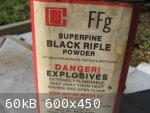

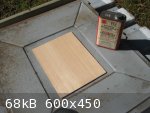
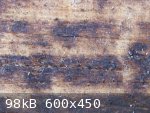
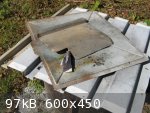
|
|
|
ultragroove
Oud Maniac
   
Posts: 68
Registered: 1-9-2010
Location: Naumburg, Germany
Member Is Offline
Mood: Athar Kurd
|
|
I already wondered where the detailed contribution of jdowning remains ... Thank you! 
|
|
|
jdowning
Oud Junkie
    
Posts: 3485
Registered: 8-2-2006
Location: Ontario, Canada
Member Is Offline
Mood: No Mood
|
|
For experimental luthiers who are nervous about playing around with gunpowder, a safer alternative would be to uniformly burn a soundboard surface
with a propane torch and then remove much of the carbonised wood with fine steel wool rubbed in the direction of the grain.
This results in a 'raised grain' finish as the softer early wood cells are less resistant than the late wood cells.
The attached images are of a test piece of quarter sawn Sitka spruce - the macro image showing the latewood cells standing proud of the early wood
cells between.
The burning process causes the surface wood cells to shrink relative to the uncarbonised face of the wood causing permanent 'cupping' or 'bowing'
across the wood grain.
This might have some acoustic effect (good or bad) on a soundboard so treated?
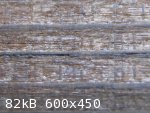
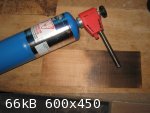
|
|
|
jdowning
Oud Junkie
    
Posts: 3485
Registered: 8-2-2006
Location: Ontario, Canada
Member Is Offline
Mood: No Mood
|
|
To complete these brief burning trials - for curiosity and information - a piece of slab cut white pine (plain white in colour) about 12 mm thick was
subject to uniform surface burning with a propane torch, rubbed in the grain direction with steel wool and then burnished with a cloth. This again
resulted in a slight 'raised grain' and 'cupping' across the grain - despite the relative thickness of the test piece.
I suspect that the carbonised wood surface also becomes harder than before - although I have no way of confirming this.
The resulting uniform Chestnut colour and resulting emphasis of the wood grain pattern is surprising - much better than can usually be achieved with a
wood stain on softwood. I understand that this procedure is sometimes used by woodworkers as a finishing procedure - but I had never tried it before
now.
So this might at least be a useful finishing procedure for some lighter toned luthier woods even if not recommended for more critical soundboard
applications? Bowl rib blanks perhaps?
In the case of a bowl rib, the induced cross grain curvature due to burning might be further increased when a rib blank is bent to the required bowl
curvature - especially if the surface burning is made part of the hot bending procedure? Fluted ribs perhaps?
P.S - I have run a trial to test if a slab cut rib blank will become more 'fluted' if bent using an open flame to apply heat sufficient scorch the
upper surface during the bending process. Sadly, the result was negative - if anything the bending seemed to reduce the amount of fluting. Back to the
drawing board!
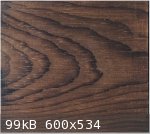
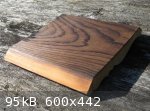
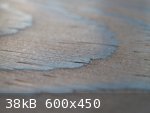
|
|
|
jdowning
Oud Junkie
    
Posts: 3485
Registered: 8-2-2006
Location: Ontario, Canada
Member Is Offline
Mood: No Mood
|
|
Having an interest in early technologies with respect to material properties and uses I was browsing an archery forum the other day where the
bow-makers were discussing the apparent benefits of changing the properties of the wood of a bow by scorching the surface of the wood on the 'belly'
(the part facing the archer). The material of a bow must be elastic in tension (on the 'back' of the bow) as well as in compression (on the 'belly).
Turkish and other Asiatic bows achieved extreme power by using animal sinew glued to the back of the bow and horn glued to the belly. One disadvantage
of these bows was that they performed best in a dry environment where there was no danger of the animal glue softening and the bow falling apart. In
damper climates, bows were often made entirely of wood to avoid this potential problem. The best bow woods are very elastic and stronger in tension
but less so in compression. To overcome this shortcoming, 'primitive' societies would increase the compression strength of a bow by heating the
'belly' over a charcoal fire at scorching temperature. Modern day researchers have experimentally confirmed that bow woods treated this way improve
the performance of a bow - provided the wood is not overheated so that it burns or chars. The scorching temperature is maintained for a period of
about 30 minutes so that the heat treated wood extends to about half the thickness of each bow limb (about 6mm). It was observed that the wood not
only darkened in colour and became harder but that the wood (when bent and held to a reflex curve - i.e. away from the archer) shrank causing the
surface to 'cup' or become convex. So here the bow makers confirm that heat treating can result in cupping or fluting.
So perhaps it might be worth another attempt to use this method for fluting oud or lute ribs. Apparently the best woods for this treatment are the
white ring porous hardwoods (such as Ash or Elm) rather than diffuse porous tropical hardwoods.
Interestingly, heat treated wood is a process that has been around for decades - the wood heated between 180°C to 250°C for a period of time
dependent upon wood species and end use. The woods are heated in pressure chambers so that treatment covers the full depth (not just the surface as in
the case of bows). This treatment - dependent on procedure - reduces the water absorption properties of wood, improves dimensional stability,
improves resistance to rot or insect attack and results in colour change - of interest in making low cost white woods more attractive in resembling
more costly hardwoods. The treatment may also increase wood density and so wood hardness. With this treatment woods such as poplar or pine may be
upgraded and used in outdoor or indoor wet applications (pools, saunas etc.) without rotting and without need for poisonous chemical preservatives.
One company making heat treated wood advertises an application for musical instruments but does not provide more information.
The downside for wood treated at the higher temperatures is that there is some loss of mechanical properties such as Modulus of Elasticity if the
heating period is prolonged to days (but little change at lower temperatures for short periods under two hours). Nevertheless, the potential reduction
in mechanical properties means that the commercially heat treated wood is not used for structural applications.
So does this heat treatment method have a luthier application? It might - in allowing use of lower grade materials for, say, making bowls. Might be
worth a few more trials to explore the potential possibilities.
|
|
|
jdowning
Oud Junkie
    
Posts: 3485
Registered: 8-2-2006
Location: Ontario, Canada
Member Is Offline
Mood: No Mood
|
|
Just for information, it would appear that heat treated wood has, for many years, had musical instrument applications aimed at acoustic 'improvement'
(a.k.a. artificial aging) and so allowing use of less expensive woods. The HT applications extend also to instrument components such as fingerboards
where heat treatment is employed to harden softer species of wood (for example Yamaha A.R.E. and Gibson guitar HT woods)
Clearly, due to the variables of temperature, wood species, Relative Humidity, time etc. there is a lot of commercial proprietary data obtained
through experimentation in order to obtain a desired end result.
Attached for information is a patent application dating back to 1922. Note the application of varnish followed by secondary heat treatment at lower
temperature in order to 'drive' the varnish deep into the wood cells. One bow maker reports successfully using a shellac coating followed by a second
heat treatment to further consolidate the wood.
http://www.google.com/patents/US1483733
|
|
|
jdowning
Oud Junkie
    
Posts: 3485
Registered: 8-2-2006
Location: Ontario, Canada
Member Is Offline
Mood: No Mood
|
|
The attached current review of research into various aspects of the modification of wood by heat treatment may be useful in gaining a better
understanding of the chemical and physical changes occurring and hence how they might potentially apply to instrument woods.
No information on the uncontrolled use of gunpowder as a heat treatment agent however!
http://www.ncsu.edu/bioresources/BioRes_04/BioRes_04_1_0370_Esteves...
|
|
|